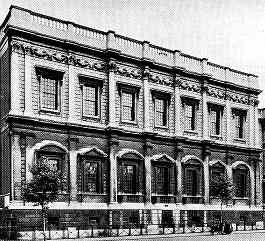Renaissance architecture
Taking their cue from the simple lines of the architecture of ancient Greece and Rome, the architects of the Renaissance designed buildings with the flat, wide windows that new engineering techniques made possible, but used simple arches, pediments, and columns.
The style thus created is usually known as Palladian, from the name of its most original practitioner*.
Pictured here is the Banqueting Hall at Westminster, designed by one of the few great Renaissance English architects, Inigo Jones*. Ironically, by the time he was creating the elegant simplicity of this building and others like it, architects in Europe were moving towards a more ornate style, the Baroque, where the detail, while still classical in inspiration, became more elaborate. Click here* for an example.
Footnotes
-
The Palladian style
Andrea Palladio (1508-80) began life as a simple stonemason. He studied the buildings of antiquity in Rome, but did most of his work as architect in Venice. Most of the great European buildings of the Renaissance are indebted to his innovations and his elegance of design.
-
Jones, the architect
Jones was active as a stage designer for elaborate Court masques as well as for buildings.
-
The baroque style
Architectural Facade. Art Gallery of Greater Victoria.
The sketch here was made towards the end of the sixteenth century by an artist of the school of Perino del Vaga. The classical colums are still simple, but the pediment above the door has become highly ornate with a broken peak and reclining statues.

